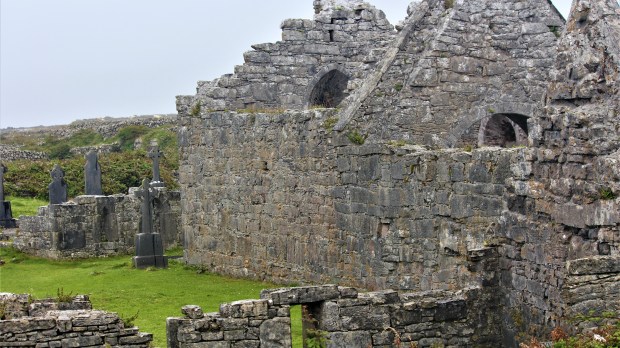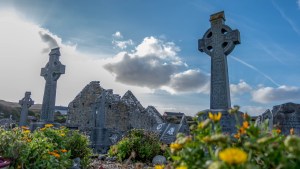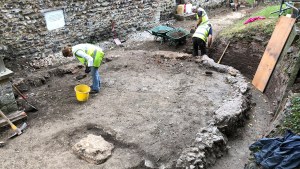The Book of Leinster is a medieval manuscript considered one of the most important works of early Irish literature. Named after the Irish province of Leinster, the book was compiled in the 12th century, and it contains a wide range of material – mythology, history, law, genealogy, and religious texts. It was formerly known as the Lebor na Nuachongbála, “The Book of Nuachongbáil,” a monastic site known today as Oughaval.
Written in Old Irish, the Book of Leinster is one of the most significant surviving examples of this language. The manuscript is believed to have been created by different scribes and illuminators, surely commissioned by a wealthy patron. The principal compiler and scribe was probably Áed Ua Crimthainn, who was then abbot of the monastery of Tír-Dá-Glas on the Shannon, now Terryglass, and the last abbot of that house for whom we have any record. Local archives suggest that the manuscript was produced by Aéd and some of his pupils over a long period, going from 1151 to 1224.
One of the most notable sections of the Book of Leinster is the Táin Bó Cúailnge, “The Cattle Raid of Cooley.” It is an epic tale that tells the story of the war between the kingdoms of Ulster and Connacht, and is considered one of the greatest works of Irish literature. Indeed, the Book of Leinster contains one of the oldest surviving versions of the Táin Bó Cúailnge, and is therefore of great importance to scholars and historians.
In addition to the Táin, the Book of Leinster also contains several other important works, including the Lebor Gabála Érenn, “The Book of Invasions,” which traces the history of Ireland from its mythical origins to the arrival of the Milesians; the Dindsenchas, a collection of place-name lore; and several religious texts, including hagiographies of Irish saintsand a transcription of a famous martyrology, the Martyrology of Tallaght: a list of saints and their feast days assembled by Máel Ruain or Óengus the Culdee at Tallaght Monastery, near Dublin. The prologue of the Martyrology contains a verse on the declining pre-Christian faiths in Ireland as early as in the 9th century – the Martyrology being copied by Áed and included in the Book of Leinster centuries later. The text reads:
Senchatraig na ngente/iman roerud rudad/itfossa can adrad/amail Lathrach Lugdach.
Ind locáin rogabtha/dessib ocus trírib/it rúama co ndálib/co cétaib, co mílib.
The old cities of the pagans to which length of occupation has refused are deserts without worship like Lugaid’s House-site.
The little monastic sites that were settled by Romes are with multitudes, with thousands.
The Book of Leinster is also notable for its beautiful illustrations and decorations. The manuscript contains intricate illuminated initials, as well as a few full-page illustrations. These illustrations are among the earliest examples of Irish manuscript art and are an important part of the manuscript’s cultural significance. Today, it is housed in the library of Trinity College Dublin, where it is available for study and research.



